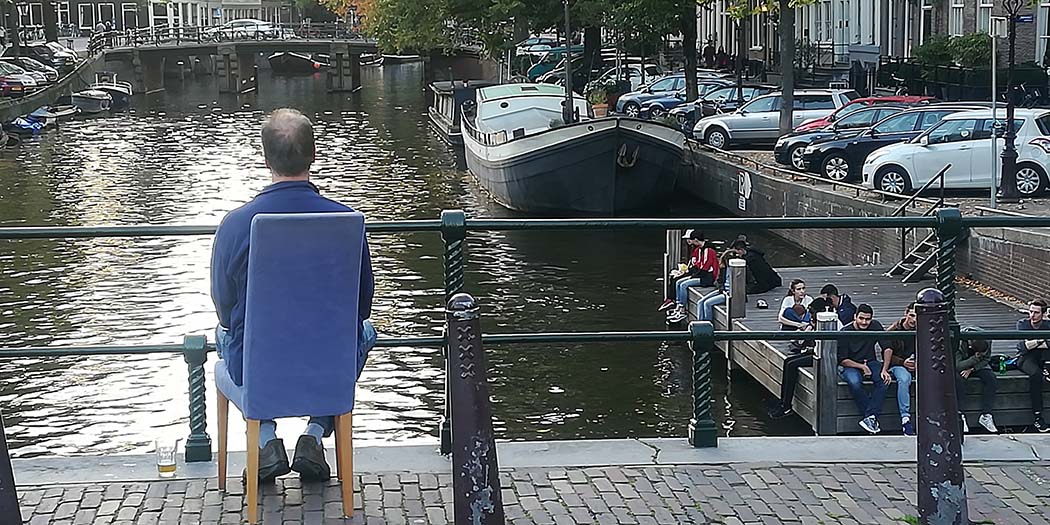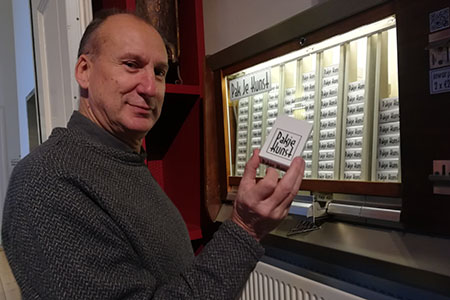Public space is where all citizens, regardless of their income and personal circumstances, can feel both equal and cared for.
Urban public space has long been a subject for debate, and the COVID-19 pandemic has sharpened this discussion considerably. People confined to their homes suddenly began to appreciate the true value of public space, and its contribution to the quality of urban life. As a recent United Cities and Local Governments (UCLG) study emphasised, “public space is where all citizens, regardless of their income and personal circumstances, can feel both equal and cared for”. (1)The 2015 Eurobarometer survey on European cities indicated that satisfaction with the availability of green spaces and public spaces was the strongest correlate with overall life satisfaction, ahead of public transport and healthcare, for example.
Cities such as Barcelona have sensibly prioritised the expansion and development of public spaces, exemplified most recently by the “superblock” programme, which creates new squares and green spaces, and prioritises pedestrians. However, even with new public spaces, pressures of use continue to grow. Increased mobility and more active and fragmented lifestyles lead to growing numbers of city users—more commuters coming into the city to work, more day visitors and tourists, and the temporal extension of leisure activities into the “night-time economy”. This expansion of users makes designing and managing public space more complex. Cities need strategies to develop, manage and valorise their public spaces, for the public good. This requires a proactive process of placemaking: a conscious effort to make places better to live in, for all users of the city. (2)
One increasingly visible group of city users is that of tourists, who are particularly important in popular urban holiday destinations such as Barcelona. Tourism is a double form of displacement: tourists displace themselves from their home environments to spend time somewhere else, but, by being somewhere else, they also displace the local population. Tourists crowd into the city centre alongside residents and workers, competing for the already scarce public space. The events that most cities organise to attract tourists can also displace other, more local urban functions. Tourists also make disproportionate demands on public space, where they spend most of their time: that is, local residents can be at home or at work, but the tourist inhabits the public realm.
The tourists’ use of public space is not just a question of numbers: it also depends on the style of tourism. Richards (2021) outlines different phases of tourism and urban development, (3) using Pier Luigi Sacco’s conceptualisation of the evolution of culture. The origins of modern public culture are seen as Culture 1.0, with museums funded by rich industrial patrons, later embraced by the state as symbols of national power. The subsequent recognition of culture as an industry ushered in the Culture 2.0 phase, in which culture became a source of jobs and income, and a means of attracting tourists. More recently, the diversifying of cultural taste, the fragmentation of cultural production and the rise of new technologies all led to culture becoming seen as a means of creating identity, of stimulating social cohesion and supporting creativity (Culture 3.0). The changing relationship between culture and cities also provided new opportunities for tourism. The elite consumption of the Grand Tour that marked Culture 1.0 was superseded by mass cultural tourism, which flooded the new museums and other Cathedrals of Consumption of Culture 2.0. Subsequently, Culture 3.0 has stimulated new forms of tourism, such as creative tourism, gastronomic tourism and “living like a local”.
The changing styles of tourism have also brought about different relationships with the public space. During Culture 1.0, tourists dutifully kept to those public spaces indicated as being of touristic interest, and their limited numbers and hushed reverence for cultural highlights also helped tourists blend in. The mass cultural tourists of Culture 2.0 were not only more numerous, but they also behaved differently. Culture was an experience to be consumed, and public spaces provided easily accessible culture and relatively cheap experiences. Moves to ban tourists sitting on the ground and eating their own sandwiches in Venice’s Piazza San Marco characterise policy responses to this style of tourism. The shift towards Culture 3.0, meanwhile, opened up private spaces to tourism: the apartment belonging to a local resident, the trendy neighbourhood bar, the vibrant creative quarter. Cultural tourists were no longer confined to the city centre—they were everywhere. Richards (4) describes a cat and mouse game emerging between the tourists and the locals. The tourists, eager for a genuine experience of “everyday life”, set out to find the locals, while the locals, increasingly squeezed out of their normal haunts by tourists, go in search of untouristed places. Then the tourists set out in search of the new local hangouts, and so on. This shifts the cultural hotspots in the city, whereby one “cool” neighbourhood progressively replaces the other. Often kick-started by gentrifying locals and expats, the transition from café con leche to cappuccino also heralds the arrival of pioneering tourists in search of authentic local experiences, to be followed by growing numbers of other visitors.
The growth, change and spread of tourism in cities has significant implications for public space. Because visitors are often in search of a lifestyle, rather than specific cultural attractions, public space becomes the arena in which these lifestyles are consumed. Tourists not only consume these lifestyles: they also transport and reproduce them. The predominant North-South movement of European tourists has been pivotal in the importation of Mediterranean street culture into countries such as the UK and the Netherlands. Public space concepts such as the Rambla have been globalised by tourists as well as professional architects. The Mediterraneanisation of the North has included the adoption of the now-ubiquitous cappuccino, croissants and tapas, complete with the outdoor café terraces on which to enjoy them. The re-importation of the tourist imagining of Mediterranean space has in turn transformed the public spaces of Barcelona, as befits the self-styled Capital of the Mediterranean. (5)
Implications for the future
The pandemic has underlined the importance of public space, bringing new transformations. The digital shift implied by teleworking means less demand for city-centre offices, thus stimulating a re-evaluation of urban space. Initially, the pandemic led to new uses of public space, most notably through the conversion of squares into vast café terraces, and roads given over to pedestrians. When tourists return after the pandemic, just like local residents, they will take advantage of this new space, re-establishing user pressure again—this will require new negotiations between local and non-local space users.
Part of the solution may lie in new technologies. In Amsterdam, a pilot system provided real-time information on levels of crowding and waiting times for major attractions, helping to spread visitors to other locations. Useful as these systems might be, we must ensure that the city does not become a vast theme park, with a ‘fast pass’ lane for high-spending visitors.
The increasingly blurred line between offline and online modes of production and consumption, due to the pandemic, also has important implications for public space and tourism. The rising digital connectedness of public space means increased information density and a blurring of functions, whereby those public spaces that were previously dominated by leisure and ceremony will become mixed-use spaces—parking spaces as impromptu dining rooms, parks as open-air gyms, café terraces as workplaces for digital nomads. The growing indistinction between offline and online life will also hasten the arrival of Tourism 4.0, or “cultural e-tourism”, which blends urban, cultural and digital networks. Public spaces will no longer be limited to physical encounters between the different groups in the city, but a blended online/offline dialogue between mobile citizens, immigrants and tourists, co-producing their own discourse through travel, as facilitated by TripAdvisor and other platforms.
The information cascade of social media also tends to concentrate people in the same places, ones that have been highly ranked by others. This means that tourists cannot be managed on their own: all city users should be digitally guided to behave in different ways. Cities should consider stimulating the co-creative use of public space, rather than managing space competition. The UCLG report, regarding synergies between tourism and cultural policies, frames tourists as a potential asset, a source of creativity rather than simple users of cultural resources. We should ensure that tourism adapts to maximise the creative dividend of increased diversity, and also bringing increased critical mass to support niche culture. This requires thinking about tourism, culture and everyday life as dependent parts of the cultural ecosystem of the city, rather than conflicting interests. Such thinking would necessarily entail a strong regulatory framework to maintain the democratic nature of public space. The places of the city should essentially remain “trusting spaces”, as Eduard Delgado of Interarts once put it, i.e. places where different groups recognise the rights and duties that the use of public space duly implies. If that can be achieved, then tourists can more readily be positioned as temporary citizens, rather than mere consumers.
Notes:
(1) Garau, Pietro, Public Space: Think Piece, Barcelona: UCLG, 2014.
(2) Richards, Greg and Duif, L., Small Cities with Big Dreams: Creative Placemaking and Branding Strategies, New York: Routledge, 2018.
(3) Richards, Greg, Rethinking Cultural Tourism, Cheltenham: Edward Elgar, 2021.
(4) Richards, Greg, “El turismo y la ciudad: ¿hacia nuevos modelos?”, Revista CIDOB d’Afers Internacionals, no. 113, 2016, pp. 71-87.
(5) Richards, Greg, Placemaking in Barcelona: From ‘Paris of the South’ to ‘Capital of the Mediterranean’, MNNieuws, 12th September 2016: http://www.mmnieuws.nl/article/placemaking-in-barcelona-from-paris-of-the-south-to-capital-of-the-mediterranean.




